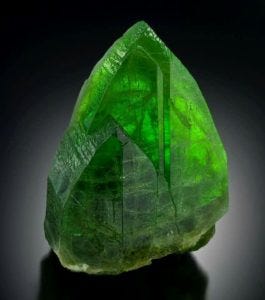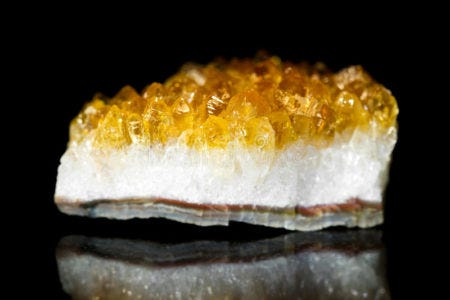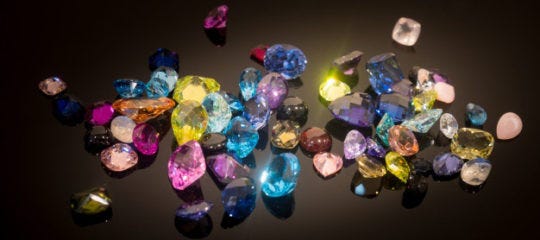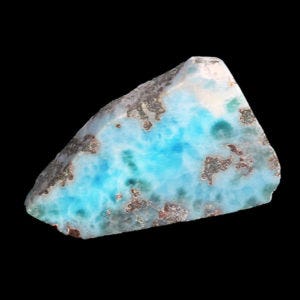Gemstones For Wholesale Jewelry: 6 Colors, 6 Meanings
Gemstones For Wholesale Jewelry: 6 Colors, 6 Meanings
Gemstones have their existence on Earth from as long as the Earth itself. Still, there is no limit to the variety to date. There are so many gemstones available to make jewelry for wholesale or retail, that it can cater to everybody’s needs and wants.
Be it subtle, colorful, cool, warm, aggressive, calm, or anything, no person will be left disappointed. Let us explore what gemstones actually are before we get into the beautiful colors they are available in.
Be it subtle, colorful, cool, warm, aggressive, calm, or anything, no person will be left disappointed. Let us explore what gemstones actually are before we get into the beautiful colors they are available in.
Gemstone Meaning?
Gemstones are formed from naturally occurring minerals and are used majorly to curate jewelry for wholesale or retail or any other purpose. They are extracted from deep within the sea or from the Earth.
The raw form of these gemstones is not as fascinating as the finished and polished ones. This is mainly because of the impurities and the fissures. They are given different cuts and polishes to improve their grades and also depending upon which wholesale jewelry piece they will be embedded in.
These mesmerizing gemstones are not only used in the jewelry to make some classy accessories but also worn because of the metaphysical properties they possess. They are not always extracted from the minerals, sometimes they are obtained from organic materials, ‘pearls’ for an example.
Any gemstone is graded and/or priced based on the 4 C’s, i. e. color, cut, clarity, and carat along with the rarity and availability. They are placed into different families based on their chemical composition (e.g., silicates, oxides, hydroxides, etc.) and minerals (e.g., corundum, beryl, feldspar, etc.). Gemstones for wholesale jewelry are available in every color, hence, the love for gemstone jewelry among the people.
Colors Of Gemstones

Gemstones are available in various colors around the world, but when you talk about a particular gemstone with someone, they will automatically associate that with its renowned color. For example, talking about opal, one can easily imagine the multicolored fire. Similarly, while imagining emerald, it’s the green color that flashes. Some gemstones become so popular among the legion of jewelry manufacturers or jewelry lovers just because of the unique colors they are available in and the brilliant luster to manufacture jewelry for wholesale. Let’s learn more about some of them.

This is the most famous one among all the other moonstones in the world. It has several mines in the Indian subcontinent. It has a milky-white appearance and flashes the multicolored fire with the slightest movement. Also, it reflects the light falling on it, making it look magical. The milky white base gives it a moon-like appearance, which is why it is known as the moon’s gemstone. This type of moonstone was majorly popular amongst the bohos and gypsies, because of its healing and protective properties. But, nowadays, it is getting popular in fashion and wedding jewelry as well. Moonstone silver jewelry for wholesale has become very popular in the past five years, and there seems to be no stopping it from penetrating the market even more.Other names: Hecatolite, Moon’s stone, orthoclaseHardness: 6 on the Mohs scale
Larimar is a beautiful gemstone that reflects the depth of the ocean and the height of the skies. It is a calming stone with brilliant hues of blue, used to manufacture jewelry, especially wholesale jewelry. It is a blue variety of ‘pectolite mineral,’ which is very rare and is found only in the Dominican Republic in the Carribean. The price and rarity of the stone are directly proportionate to the tone of shade. However, this gemstone is photoresponsive and will fade if exposed to bright light or heat for a long time. It is believed that the person who discovered it in 1974, named it after his daughter, combining the initials of her name ‘Larissa’ and the Spanish word for sea, ‘Mar,’ thus creating ‘Larimar.’
Other names: Dolphin stone, Blue pectolite, Atlantis stone, Stefilia’s stone.Hardness: 4.5–5 on the Mohs scale
Other names: Dolphin stone, Blue pectolite, Atlantis stone, Stefilia’s stone.Hardness: 4.5–5 on the Mohs scale

Peridot is a beautiful gemstone having different shades of green ranging from light yellowish green to dark brownish-green. It obtains this color from its own chemical composition rather than the impurities therein. Also, it is one of the very few gemstones which is available in a single color. It is found deep within the Earth in the mantle layer and is brought to the surface through tectonic or volcanic interferences. The best quality peridot is found in Burma. However, it is not limited to that and is located in regions of Pakistan, China, Arizona, and Vietnam. The magnitude of the color will depend upon the amount of iron it contains, which in turn will impact the quality of the wholesale jewelry it is used in. It is the gemstone name for olivine, which belongs to the forsterite-fayalite mineral family.Other names: Chrysolite, Olivine, Poor man’s emeraldHardness: 6.5–7 on the Mohs scale

Morganite is a brilliant gemstone belonging to the Beryl mineral family (famous for green emerald). The shades of pink vary from light pink to violet-pink depending on the traces of manganese and cesium included in the stone. Unlike other pink colored stones, morganite is the clearest with minimum inclusions, responsible for the brilliant luster. The stone, first identified in 1910 in Madagascar, is named after a very famous American banker & gemstone collector, J.P. Morgan. Raw morganite is often used to curate fashion jewelry, which is very popular among wholesale jewelry manufacturers and buyers. It is majorly found in Brazil and Madagascar; however, Afghanistan, China, Mozambique, Namibia, Russia, Zimbabwe, & the USA are other places where the deposits are found.
Other names: Pink beryl, Rose Beryl, Pink emeraldHardness: 7.5–8 on the Mohs scale
Other names: Pink beryl, Rose Beryl, Pink emeraldHardness: 7.5–8 on the Mohs scale

Citrine is a gorgeous yellow member of the quartz family, which is the second most common mineral found in the Earth. There are other colors of quartz as well, and it is formed when the minerals are deposited in the cracks of rocks, leaving behind the raw gemstones. Natural citrine, however, is not very common and majorly produced by treating amethyst and smoky quartz with heat. Natural citrine is comparatively lighter in the shade, and the heat-treated citrine will be more towards orangish or brownish yellow, which is popular among wholesale jewelry manufacturers. Its resemblance to the yellow citric fruit lemon is responsible for its name. It is majorly found in Brazil, along with Argentina, Madagascar, Zaire, Namibia, Spain, and Russia.Other names: Yellow quartz, Yellow TopazHardness: 7 on the Mohs scale

Sugilite, a rare gemstone with hypnotizing purple color, belongs to the cyclosilicate mineral group. Manganese included in the stone is responsible for the beautiful purple color it possesses, which can vary from pinkish-purple to deep bluish purple. First discovered in Iwagi Islet, Japan, in 1944, it was named after the person identified it, Ken-Ichi-Sugi. However, it was included in the gemstone category in 1979 when it was again found in South Africa, followed by classifying it as a rare gemstone 1980. Apart from Japan, the deposits can also be found in India, South Africa, Australia, Italy, Canada, and Tajikistan. Used for making fashion and wholesale jewelry, sugilite is popular because of its scarcity.
Other names: Purple turquoise, cybelene, Lavulite, Royal AzelHardness: 5.5–6.5 on the Mohs scale
Other names: Purple turquoise, cybelene, Lavulite, Royal AzelHardness: 5.5–6.5 on the Mohs scale
All the varieties of gemstones that we have discussed have exceptional qualities of their own and can be selected for making jewelry for wholesale or retail, based on those peculiar attributes. Other things that can be kept in consideration are demand, choice, popularity, etc.
A HAPPY CUSTOMER MAKES A SUCCESSFUL BUSINESS.


Comments
Post a Comment